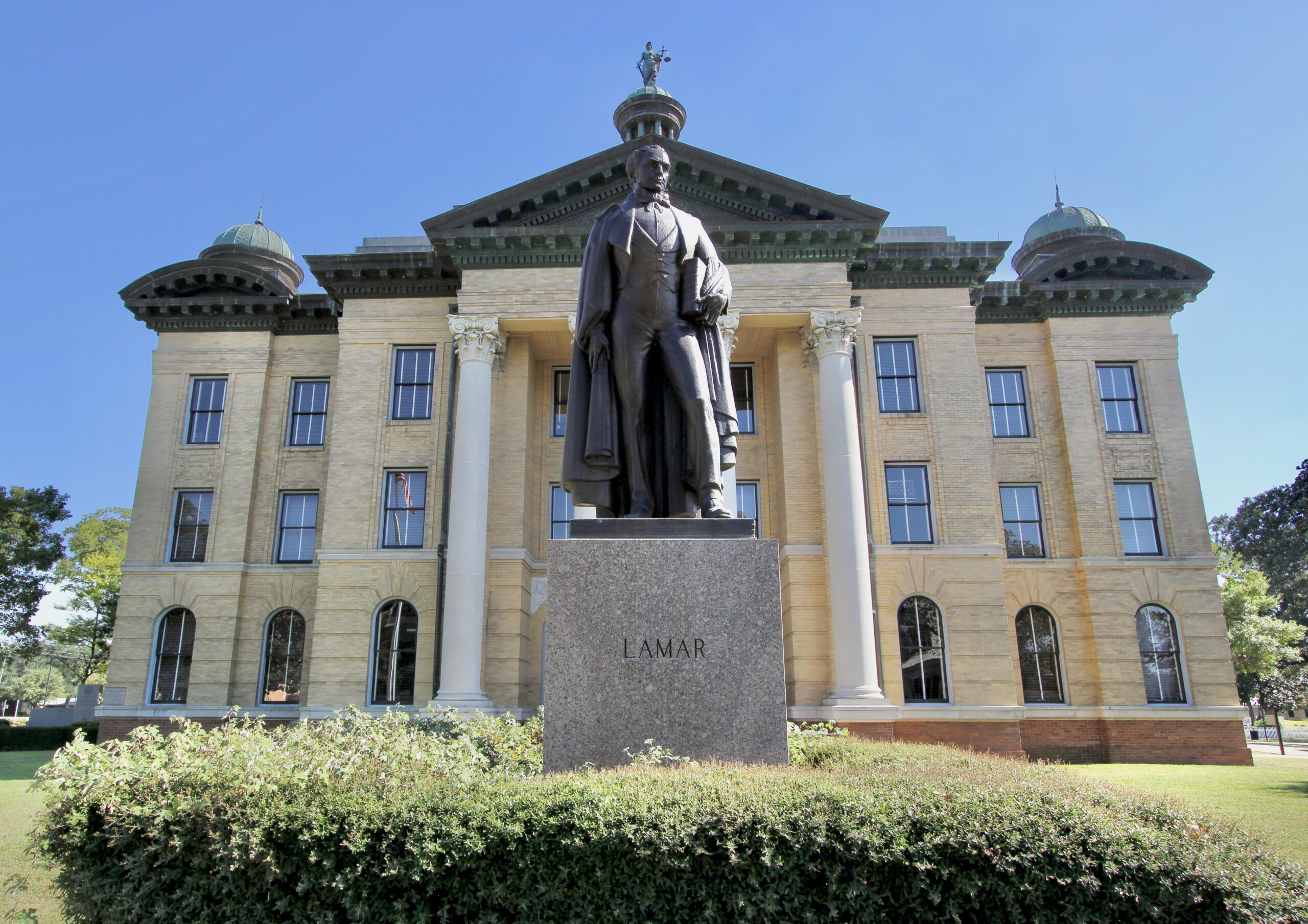“Old” Fort Bend County Courthouse (Richmond)

Year Built: 1909 with additions in 1935 and 1957.
Architect: Charles “C.H.” Page.
The “Old” Fort Bend County Courthouse is located in the City of Richmond, Texas. Richmond County is part of the greater Houston area, and located southwest of the City of Houston. Fort Bend County and Richmond are tremendously important to Texas history and played a major role in the ballet for Texas Independence from Mexico.
The courthouse is designed in a classical revival style typical of the Page brothers, who designed many courthouses throughout Texas. Here is just a tiny snippet from one article contained in one source (my favorite) – the TSHA Handbook of Texas:
The settlement of Fort Bend County began in the early 1820s as part of the Anglo-American colonization of Texas under the auspices of the Spanish government. Authorization to settle 300 families in the valleys of the Brazos and Colorado rivers was initially granted to Moses Austin, but plans were delayed by his death in June 1821 and Mexican independence from Spain. Stephen F. Austin assumed the responsibility of leadership from his father and gained confirmation of the original Spanish grants from the newly established Mexican government in 1823. Following arrangements with Austin, a group of colonists sailed from New Orleans in November 1821 on the schooner Lively and anchored near the mouth of the Brazos River on the Texas coast. In 1822 a small party of men from this group left the ship and traveled inland some ninety miles and, on a bluff near a deep bend in the river, built a two-room cabin. As the settlement grew, the cabin became known as both Fort Settlement and Fort Bend; the latter name, in time, prevailed. In 1824 the Mexican government issued documents officially granting to the colonists their leagues of land. Of the 297 grants, fifty-three were issued to Fort Bend settlers (see OLD THREE HUNDRED). The presence of the Karankawa Indians near the new colonial settlements proved to be a comparatively minor problem. The first settlers had a few skirmishes, but as the colonies increased, the Karankawas began moving out of the area and by the 1850s had migrated as far south as Mexico.
In May 1837 the Congress of the Republic of Texas passed an act incorporating nineteen towns, including Richmond. Robert Eden Handy of Pennsylvania and William Lusk of Richmond, Virginia, both of whom had arrived in Texas shortly before the war for independence from Mexico, founded and named the town with eight other proprietors, including Branch T. Archer, Thomas Freeman McKinney, and Samuel May Williams. An act establishing Fort Bend County and fixing its boundaries was passed on December 29, 1837; Wyly Martin was appointed the first chief justice. On January 13, 1838, the citizens voted to make Richmond the county seat. The county was taken from portions of Austin, Brazoria, and Harris counties. Its irregular shape was, in part, the result of using waterways to form the west and segments of the south and east boundaries. Several efforts have been made to change the lines but with little success.
Some of the first settlers in Fort Bend County played prominent roles in early Texas history. Nathaniel F. Williams and Matthew R. Williams cultivated and milled sugar on their Oakland Plantation near Oyster Creek in the early 1840s, thus laying the groundwork for an industry that continued to develop and thrive in Sugar Land (see IMPERIAL SUGAR COMPANY); in 1837 Jane Long opened a boarding house in Richmond, where she lived until her death in 1880; and Mirabeau B. Lamar moved to Richmond in 1851 and built a plantation home on land purchased from Jane Long. Both Mrs. Long and Lamar are buried in Morton Cemetery, Richmond. During the Texas Revolution many of the people of Fort Bend fled in great haste as Antonio López de Santa Anna‘s army marched through the area. Part of this army camped at Thompson’s Ferry on the Brazos River while part marched on to meet defeat at the battle of San Jacinto. Fort Bend settlers returned from the Runaway Scrape to find their homes plundered or burned and their livestock scattered or dead.
From the THC Marker:
This classical revival building is the fifth courthouse for Fort Bend County, which was organized in 1837. The structure was designed by C. H. Page of Austin and dedicated in 1909. The contractor was the Texas Building Company, also of Austin. Exterior styling features a dome, statue, and cornices of copper. The interior has a 3-story rotunda, mosaic tile floors, and green glazed tile wainscoting. Additions were made to the courthouse in 1935 and 1957. Recorded Texas Historic Landmark – 1980
CH Page also designed the Courthouses in the following counties:
- Hays County (San Marcos).
- Williamson County (Georgetown).
- Anderson County (Palestine).
- Hunt County (Greenville).
- Bastrop County (Bastrop) (1923-1924 modernization).
- Orange County (Orange).
- Austin Federal Courthouse (1936).
A massive and modern Fort Bend County Justice Center was dedicated in 2011.
The old Courthouse was restored and rededicated in January 2014.




